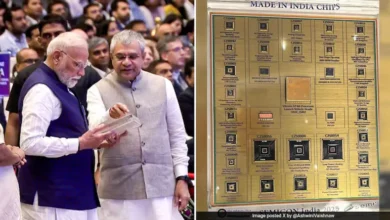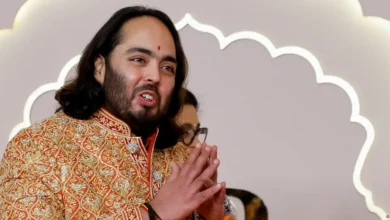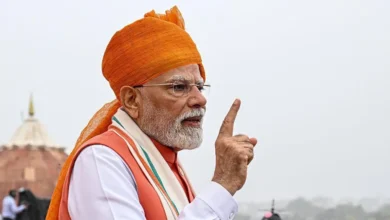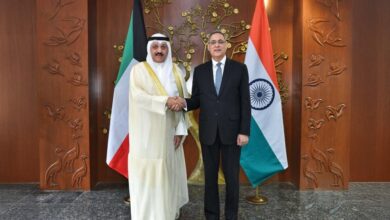India’s Ratan Tata, the man who knew how to ‘think big and bold’
Tata, who passed away on 9 October, was known for his humility and his expansive vision.

A few years ago, a graying, slightly bent man asked for a table for two at the Sea Lounge, the iconic coffee shop at the Taj Hotels’ flagship hotel in Mumbai. The restaurant was buzzing with customers vying to sit by the windows and watch the sun melt into the Arabian Sea outside.
“There were no free tables, could he give his name for the waitlist,” asked the young hostess. The man put his name down, ‘Ratan Tata’, and disappeared into the hotel’s corridors before hotel staff could come looking to find the chairman emeritus of the Tata Group, which also owns Taj Hotels.
Tata, who passed away in Mumbai on Wednesday, 9 October was known as much for his humility as he was for his expansive vision that vaulted the group from US$5 billion to more than$128 billion in revenue in 2022, in addition to ownership of celebrated brands such as Jaguar Land Rover and Tetley Tea.
The 86-year-old was mourned as one of the most beloved Indians for helping Indian businesses reach that scale, including on foreign shores, making the brand emblematic of the newly liberalizing Indian economy.
Tata was “a visionary business leader, a compassionate soul and an extraordinary human being”, Indian Prime Minister Narendra Modi tweeted soon after Tata’s demise in a Mumbai hospital.
Tata took over the group’s reins in 1991, just as India began shedding its socialist-era protectionist policies. He set about transforming the more than century-old industrial group into an innovative, cost and labor-efficient, global conglomerate.
“I think his legacy will be how to think big and bold,” said Ravi Kant, who served as chief executive and then vice chairman of Tata Motors until 2014. “There may be something not even existing, but he could think of such an opportunity and make it happen.” Indeed, Tata navigated India’s fractious politics, its regulatory hurdles and protectionist-era mindsets to chart a new course for the group.
When Tata was named chairman of the group, at 54, it was a loosely held and fractious group of companies that he struggled to put his stamp on. After studying architecture at Cornell University, he joined Tata Steel in Jamshedpur, one of the flagship units, as a junior executive. Later, he had mixed success at the group’s electronics venture, National Radio and Electronics (Nelco), and Empress Mills.
“Those were trying years, but he was gentle, soft-spoken and he stayed that way even later,” said Jehangir Jehangir, who was Tata’s executive assistant at Nelco.
Tata Sons, the group holding company, had stakes in many group companies as low as 3 percent or 13 percent, opening them up to hostile takeovers. Tata began consolidating his hold over the group without personally increasing his small shareholding.
In 1991, then Prime Minister Manmohan Singh began dismantling India’s long-held Licence Raj, which scuttled competition and required foreign companies to have a domestic partner. Many Indian companies asked for protection against foreign competition. But Tata began telling executives the opposite. “We should not restrict our thinking to India. We should think globally,” said a former senior Tata group executive, who had worked closely with Tata and did not want to be named. This thinking helped group companies emerge unscathed from the Indian economic downturn of the early 2000s.
“We started buying coal globally rather than just mining coal domestically, as we had done,” said the Tata group executive about Tata Steel. Tata Motors began making molds for Jaguar, Ford and Toyota. “We went from a 500 crore rupees loss to a 500 crore rupees profit in just a few years,” Kant recalled about Tata Motors. It also set the stage for the group’s global acquisitions.
In 2000, Tata Tea acquired the much-loved British tea brand Tetley for $431m, bringing it to global prominence. But Tata had just begun. In 2004, Tata Motors bought the South Korean Daewoo Motors’ commercial vehicle arm for $102m.
And then, in 2007, Tata Steel acquired the Anglo-Dutch steelmaker Corus, in what was one of the biggest acquisitions in its time. The British government did not help with fundraising for the acquisition in the United Kingdom, making it a formidable challenge. But Tata’s mind was set. “By then, we had relationships with international bankers, and we were able to raise $10-12bn on our own,” said the former Tata executive.
Months later, Tata Motors acquired the celebrated but ailing British carmaker, Jaguar Land Rover (JLR), from Ford Motors. “When we saw the strengths of Tata Motors and the strengths of JLR, we thought we were on to something big,” Kant, who was then the chief executive of Tata Motors, recalled.
Tata and other company executives worked to bring out new models and efficient manufacturing and returned the company to profitability in a couple of years. However, a few months later, the waters turned choppy for the group. The 2008 global financial crisis meant demand for steel came down and the Corus acquisition became a difficult one.
One of Tata’s great dreams was to make the world’s least expensive car at Tata Motors. “His favorite part of the job was to spend time at the research center at Tata Motors looking into car design,” said Jehangir.
He worked closely on developing the car. But mounting protests on the acquisition of land to set up the manufacturing plant in West Bengal state meant the project had to be abruptly abandoned midway. After meetings with chief ministers of several states, Tata Motors decided to relocate its plant in October 2008 to Sanand in Gujarat, cementing then-Chief Minister Narendra Modi’s investor-friendly image.
While the plant was being moved across the country, Tata was determined to meet timelines for the car’s launch. “We had one factory being dismantled, one being set up and one producing the car,” Tata Motors’ Kant recalled. “I don’t think it has ever been done before.”
At the launch of the Tata Nano in March 2009, Tata said, “A promise is a promise.” He had met his launch date and the 100,000-rupee ($2,000 then) price tag. In the end, the car was not a success and had to be discontinued.
In 2009, India’s Open Magazine released leaked tapes of Tata talking to lobbyist Nira Radia about obtaining telecom licenses for the group’s telecom company. The tapes included him speaking informally about ministers and the auction process.
Tata asked the courts for an injunction to prevent the further spread of the tapes. Open’s editors approached dozens of lawyers for assistance in the case, but each one “would convey his regrets because he did not want to take on Ratan Tata”, editor Manu Joseph recalled in a piece in HuffPost. “I am certain of one obvious quality of Ratan Tata, which is that he is formidable,” Joseph wrote in the 2016 piece.
It was a quality that also underscored his battle with his chosen successor Cyrus Mistry. Tata had retired in 2012, leaving the group in Mistry’s hands. But relations between the two had soon soured and in 2017 an executive search team brought in N. Chandrasekaran as group chairman. He had been the chief executive of the group’s software services business, Tata Consultancy Services.
Increasingly frail, Tata switched his focus to charitable work through Tata Trusts, which holds nearly two-thirds of the shares of Tata Sons, and correspondingly, the group. In 2018, he called Jehangir, his former executive assistant, and asked him to join the board of Tata Trusts.
“He wanted to keep up the values and the culture of the group,” Jehangir recalled. “He really wanted the culture of the group to remain when he was no longer there.”
In the last few years, Tata retreated from public view for the most part. He worked on building a network of cancer hospitals and a pet hospital, and he supported research on sustainable development at the Oxford India Centre for Sustainable Development.
Jan Royall, principal of Somerville College, where the center is housed, met Tata several times over the last few months including online when they could not meet in person. “He was especially keen on research on health and technology and always showed deep knowledge on cutting edge research in this area across many disciplines,” Royall recalled. Even through his last months, Tata kept up their meetings. “He was a real academic at heart as well as a visionary leader.”
Tata was never married and had no children. He had a great love for dogs. Once, when asked what his greatest luxury had been, Tata had replied that it was making a swimming pool for his dogs.
It was this frugal life along with his lofty corporate ambition that made many young people idolize him. Days before he was admitted to Breach Candy Hospital in south Mumbai, rumors of his ailing health had been swirling in the city. The ever-self-effacing Tata had tweeted that he was fine, just going through regular medical checkups. “Thank you for thinking of me,” he had tweeted.












